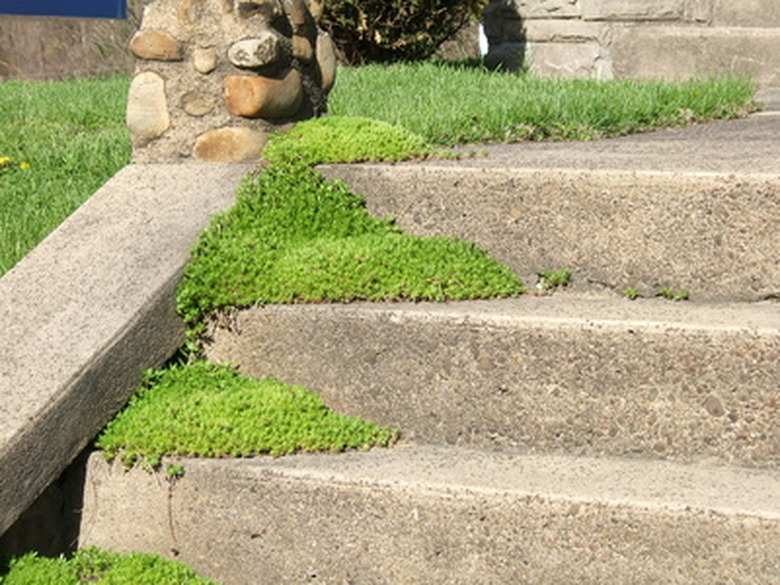How To Plant & Care For Scotch Moss
Things Needed
- Systemic, non-selective herbicide weed killer
- Rake
- Shovel
- Hand spade
- Organic matter
- 5-10-5 fertilizer
- Scotch moss plants
- Mulch
Tip
It is best to plant Scotch moss in the spring or fall. In the fall, tender young plants will require the protection of mulch. Scotch moss may be started indoors from seed by following the seed company's recommendations. When planting Scotch moss in a sloping rock garden or similar area, use netting to keep the plants in place until they are established.
Warning
During the heat of summer, Scotch moss can become too leggy and even go dormant from not getting sufficient moisture. It will usually revive as temperatures begin to drop with the changing of seasons.
Perfect around stepping stones, throughout rock gardens, and as a groundcover, Scotch moss is a low, mat-forming perennial that remains an evergreen in zones 3 through 9. Reaching heights of only 1 to 2 inches, Scotch moss (Sagina subulata) has striking chartreuse green or golden spiky foliage and stems that creep along the ground. In the late spring to early summer, Scotch moss blooms with a delicate white flower. With a requirement of light to medium shade, Scotch moss adapts to almost any soil: normal, clay or sandy.
Step 1
Treat area to be planted with a systemic, non-selective herbicide.
Step 2
Remove all dead weeds from the area using your rake to loosen and remove them.
Step 3
Till the soil to a 6-inch to 8-inch depth with your shovel. You may need to use a hand spade in some spots.
Step 4
Stir in organic matter like peat moss and decayed leaves for good aeration.
Step 5
Apply 1 to 2 pounds of 5-10-5 (nitrogen-phosphorus-potassium) fertilizer per 100 feet.
Step 6
Wait two to three weeks before planting to provide time for any remaining perennial weeds and stray grass reappear. Pull up any stubborn perennial weeds and grass by hand or use shallow cultivation to get rid of them.
Step 7
Plant Scotch moss starter plants 6 to 8 inches apart in a staggered or diamond pattern for best results.
Step 8
Top with 1 to 2 inches of mulch to keep weeds out and retain moisture.
Step 9
Water regularly. Do not over water. Soil should be moist, but not wet.
Step 10
Propagate Scotch moss in the spring by breaking sections off its root ball and replanting.
Step 11
Pinch back any spent leaves from the Scotch moss.
